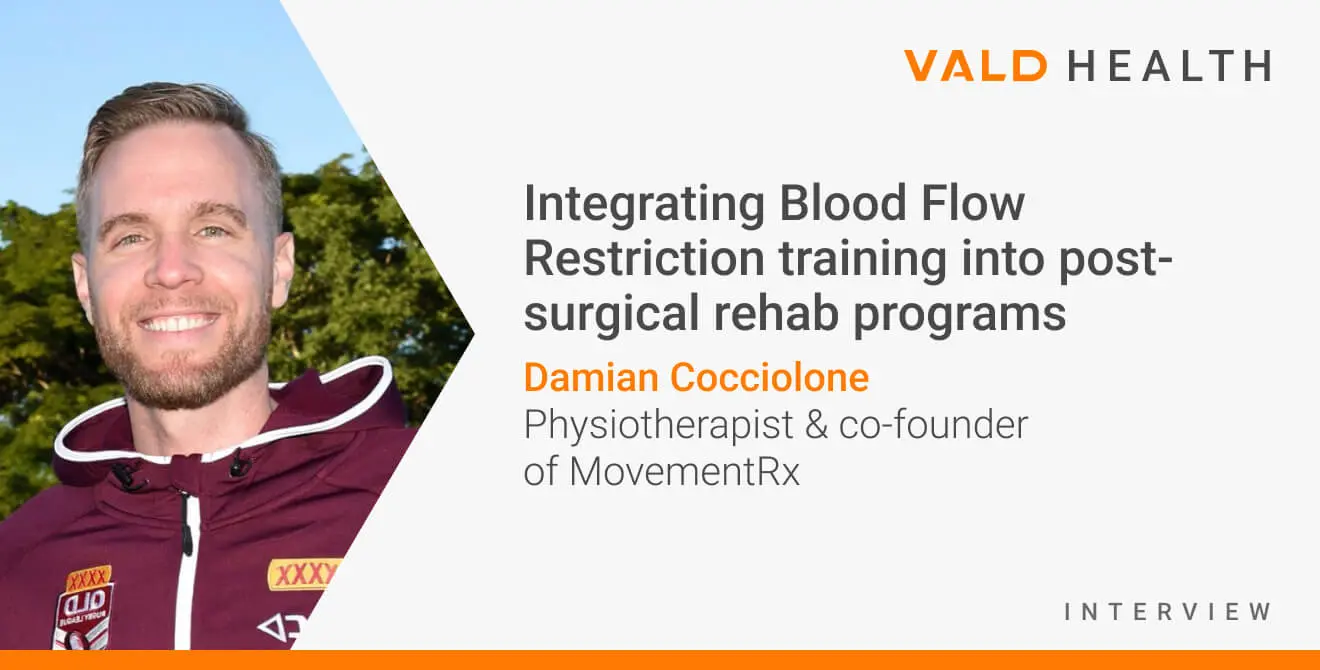Integrating Blood Flow Restriction training into post-surgical rehab programs
Available in:
EN
Movement Rx is a cutting-edge physiotherapy and sports medicine clinic located on the Moreton Bay Peninsula in Queensland, Australia.
Damian, co-founder of MovementRx, is an experienced clinician with over a decade’s worth of experience in private practice, along with extensive sports physiotherapy experience having worked directly with various professional sporting teams throughout his career.
Read on to learn more about Damian’s application of Blood Flow Restriction (BFR) and AirBands for post-surgical rehabilitation in his practice.
How have you integrated Blood Flow Restriction (BFR) training into your rehabilitation programs?
BFR offers a great way to help reduce muscular atrophy post-surgery/injury in a load compromised area.
We frequently use BFR with patients who are immobilised and are unable to bear weight or have weight-bearing restrictions to increase the effectiveness of low load/demand exercises.
These may include significant ankle sprain, lower limb fracture, surgical fixation of a syndesmosis, ACLR, arthroscopic knee surgery, hip surgery (labral trim or repair).
BFR can also be an effective tool in the rehabilitation of degenerative conditions of the hip, knee, or ankle.
Again, allowing a form of resistance training that produces strength gains whilst minimising load bearing of a degenerative joint can lead to some great success.
We’ll often also use BFR as an intermediary training tool to help settle pain and swelling, develop some muscular strength and endurance which can then be transferred to more traditional training.
What does a typical session utilising BFR look like?
A BFR training session for the patient described above usually follows some manual therapy to reduce swelling and improve range of motion.
Then, the cuff is appropriately fitted and the occlusion pressure is set.
Once set, the patient will circuit through 3-4 specific exercises at a rep range pre-determined based on their stage of healing, level of pre-injury fitness, and how familiar they are with BFR and RPE.
Do you only apply BFR in your clinic, or do you prescribe at-home BFR exercises as well?
Given the nature of load-controlled exercises, exposing our patients to the BFR stimulus more frequently ultimately leads to greater results.
So, we encourage our patients to use BFR as a part of their at-home or independent rehabilitation to maximise the effectiveness of their efforts.
Now with the availability of AirBands, the ease of use has made this far more practical and accessible to more of our clientele.
How do you explain the benefits of BFR training to skeptical or hesitant clients and get them on board with the idea?
It’s quite normal for a client to be hesitant when a physiotherapist presents a model of training that they’re unfamiliar with, especially one that describes occluding blood flow.
So, we take the time to explain in detail why we believe it will be an effective tool for their recovery, the modes with which it works, and as always, the risks.
Then, a practical demonstration of how it is applied often follows.
Finally, we’ll often provide some material to read or videos to watch to help them understand and make the most informed decision.
And as is the case with all rehabilitation, providing the patient with the autonomy and right to make that informed decision is often vital to their success.
If they are truly hesitant we will move on to another form a rehabilitation.
